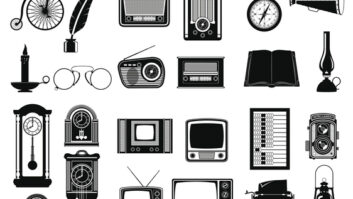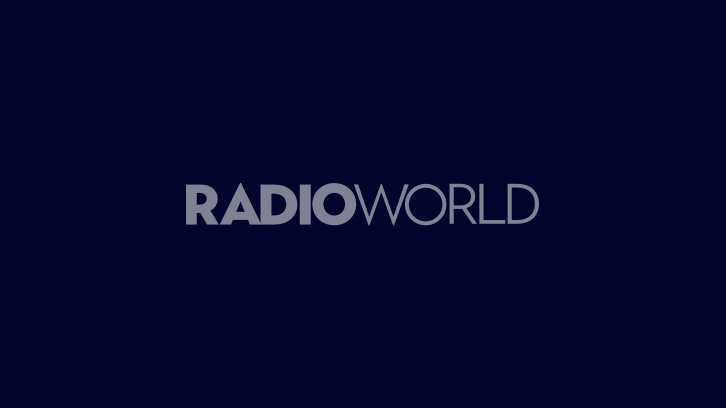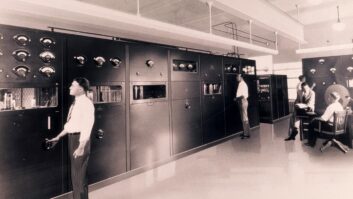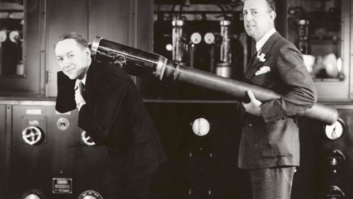This is the ninth installment in a recurring series that looks back at developments that have shaped radio broadcasting during the past 100 years, noting advancements and historical moments month by month. Read August’s story here.
100 Years Ago – September 1924: The really big news this month is that with the proper circuitry, “crystals” can produce oscillations as well as detect radio waves. Hugo Gernsback, editor and publisher of the leading radio industry magazine, Radio News, devotes the cover of his publication to the announcement of what he terms, “a sensational radio invention,” and credits discovery of the oscillating crystal principle (later to be known as a “tunnel” or “Esaki” diode) to Russian researcher O. V. Lossev. (Such devices embody the principle of “negative resistance,” and although Gernsback doesn’t mention this, he does compare the new oscillating circuit to that of an arc transmitter, which also operates on this principle.) Gernsback has devised and copyrighted a name — “Crystodyne” — for the new oscillatory circuit. He predicts that such devices, possibly employing synthesized or manmade crystals, will eventually replace vacuum tubes, resulting in much smaller receivers with greatly reduced power requirements.

75 Years Ago – September 1949: The NARBA (North American Radio Broadcast Agreement) treaty meetings this month in Montreal are generating their share of industry news, with the Cuban delegation disrupting proceedings by arguing for the replacement of the current AM clear channel frequencies by “national” channels, with nighttime protection contours extending to only 350 miles within a country’s borders. The Cubans also want to eliminate frequency tolerance standards and modulation monitoring requirements. Although not part of the NARBA proceedings, the U.S. FM Association has suggested that a widespread rollout of FM is “the logical answer” to the problem confronting the NARBA conference in finding radio channels sufficient to accommodate 2,500 stations without interference to one another. The Association added such a move would provide “a second chance to put the sound broadcasting industry in this country on a new and superior footing.”
50 Years Ago – September 1974: Automated broadcasting is beginning to come into its own, with upwards of 800 U.S. AM and FM stations now employing systems from such companies as Schafer Electronics, Northwestern Technology, and the Gates Division of Harris-Intertype to generate their program streams. If the trend continues, it’s estimated that in another 10 years most FMs and perhaps half of the AMs now on the air will be using “radio robots” in lieu of live talent.
25 Years Ago – September 1999: USA Digital Radio (USADR) is reported to be in the final testing stages in readying its “In-Band On-Channel” or “IBOC” digital radio broadcasting system for eventual widespread deployment. On-air tests are now taking place at 12 stations in markets ranging from New York City to Columbia, Md. In other news, the newly formed XM Satellite Radio organization has filed plans with the Securities & Exchange Commission for an initial public offering to raise money for its satellite-delivered radio service. XM anticipates that some $1.1 billion will be needed for development and implementation of this service, and has set the second quarter of 2001 as a target date for commencing operations.




